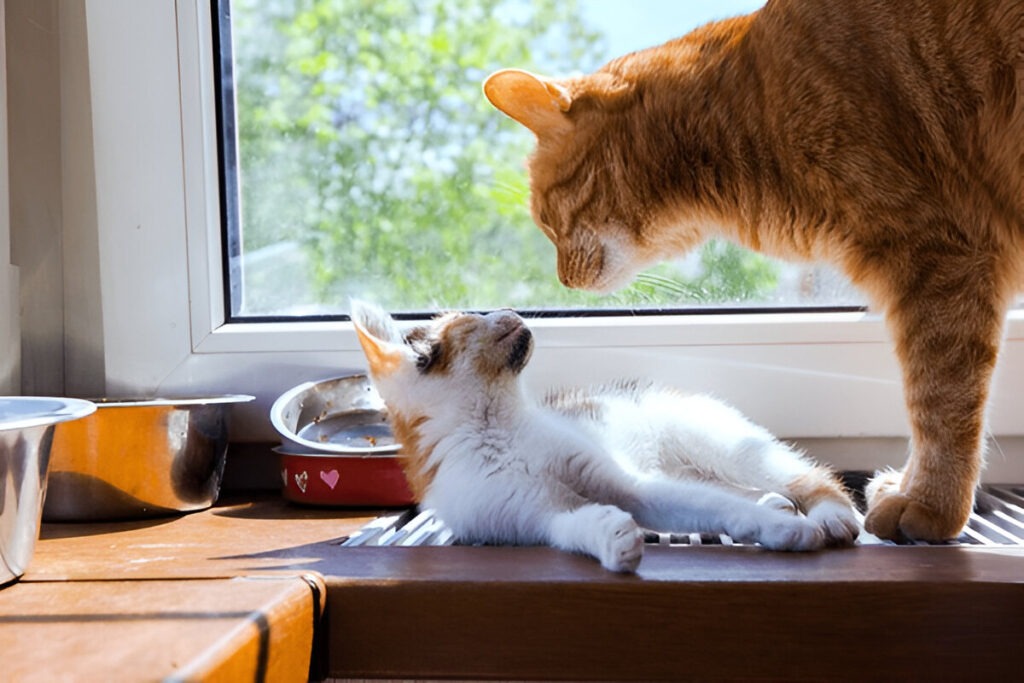The Lifetime Devotion to Feline Health
Cats are more than pets they’re beloved family members. As good owners, it’s our responsibility to see that they live long, healthy lives full of wellness and joy. But with the increase in feline obesity, diabetes, and chronic disease, staying well has never been more critical or more difficult.
In this comprehensive guide, we’re going to walk you through How to Keep Your Adult Cat Healthy for Life, marrying up veterinary science, nutritional expertise, and simple-to-apply everyday tips.
We’ll also point you towards our previous articles on the signs of a healthy adult cat and the healthy cat weight chart, so you have a whole picture of what feline perfection looks like.
1. Feed a Balanced, Species-Appropriate Diet
Nutrition forms the foundation of lifetime health. Cats are obligate carnivores, and their bodies are designed to function on high-protein, low-carbohydrate diets.
Important Tips:
- Choose foods in which meat appears first.
- Avoid fillers like corn, wheat, or soy.
- Choose wet food over dry to promote hydration.
- Use guidelines for portion from our healthy cat weight chart to avoid overfeeding.
Scientific Insight: Domestic cats fed with high-protein, low-carbohydrate food had improved metabolic health and better muscle mass according to research published in The Journal of Nutrition.
Pro Tip: Avoid switching food without consulting the vet first, especially if the cat has specific conditions such as kidney disease or diabetes.
2. Maintain a Healthy Weight
One of the most preventable causes of illness in cats is obesity. Keeping your cat at a healthy weight can prevent arthritis, heart disease, and diabetes.
Refer to our detailed healthy cat weight chart as a reference, but don’t overlook that body condition score (BCS) is as critical as the weight on the scale.
Signs of a Healthy Weight:
- Visible waistline from above
- Belly tucked in a little
- Palpable when applying light pressure, not visible
Factoid: The American Veterinary Medical Association (AVMA) reports that 60% of U.S. cats are overweight or obese, so working on this is one of the most urgent problems of modern cat care.
3. Encourage Regular Physical Exercise
Yes, cats do sleep a lot, but for as many as 16 hours a day, they still need regular mental stimulation and physical exercise.
Increasing Activity:
- Play with interactive toys like feather wands or laser pointers
- Provide climbing shelves or cat trees
- Rotate toys weekly so they stay interested
- Test food puzzles to engage their inherent hunting behavior
Did You Know? Enrichment environments reduce stress and behavioral problems, which are often early indicators of ill health. For further tips on what a happy, active cat should be like, read our article on signs of a healthy adult cat.
4. Arrange Regular Veterinary Checkups
Preventive care is crucial. Even if your cat seems completely healthy, an annual (every other year for seniors) visit to the veterinarian can catch issues before they become major.
What Happens During a Wellness Exam:
- Complete physical exam
- Vaccination boosters
- Parasite check
- Dental exam
- Blood work (in older cats)
Recommendation: Start senior wellness exams at about age 7. Early detection of kidney disease, hyperthyroidism, or diabetes will make a big difference in the outcome.
5. Observe Litter Box Habits Carefully
The bathroom habits of your cat will tell you a lot about how they are doing internally. Changes in frequency, consistency, or odor can be signs of urinary tract infections, gastrointestinal issues, or even diabetes.
Red Flags:
- Excessive visits to the litter box without actually urinating
- Straining or crying while using the box
- Diarrhea or constipation lasting more than 24 hours
If you’re unclear on what is normal, refer back to our guide to signs of a healthy adult cat, where we detail typical litter box patterns.
6. Keep Their Mind Sharp
Mental stimulation is equal to physical health. Boredom and inactivity can lead to destructive behavior, over-grooming, or depression.
How to Stimulate Your Cat:
- Introduce new textures, scents, or safe outdoor experiences
- Offer puzzle feeders or treat-dispensing toys
- Construct hiding places and perches
- Play short training sessions with clicker methods
Expert Tip: A study in Applied Animal Behaviour Science found that cats with mental stimulation had lower cortisol levels as well as reduced stress-related illness.
7. Address Oral Health
Dental disease is one of the most common and often neglected feline health issues. If left unaddressed, it can lead to pain, tooth loss, and infection in the body.
Oral Care Advice:
- Brush teeth frequently using pet-safe toothpaste
- Offer dental chews or water additives
- Monitor bad breath, drooling, or not wanting to eat
Study Source: The American Veterinary Dental College alerts us that periodontal disease inflicts over 80% of cats by three years of age, underlining the need for early action.
8. Create a Safe and Comfortable Space
A stress-free home life is an important element in your cat’s overall health. Stress can suppress the immune system and trigger behaviors like inappropriate elimination or aggression.
Environmental Essentials:
- Multiple clean litter boxes (one per cat + 1)
- Quiet hiding places and elevated areas
- Routine feeding and play schedules
- Non-toxic houseplants like cat grass
Tip: Multi-cat households should have separate resources (food and water bowls, beds, litter boxes) to reduce competition and stress.
9. Keep Vaccinations and Preventives Up-to-Date
Vaccinations and parasite control aren’t options they’re an essential part of keeping your cat healthy throughout their life.
Core Vaccinations:
- Rabies
- FVRCP (feline viral rhinotracheitis, calicivirus, panleukopenia)
- FeLV (recommended for outdoor cats)
Preventive Treatments:
- Monthly flea, tick, and heartworm prevention
- Periodic deworming, especially for indoor-outdoor cats
Source: New vaccination recommendations of the American Association of Feline Practitioners (AAFP) are based on age, lifestyle, and risk factors.
A Holistic Approach to Lifelong Feline Wellness
To know how to keep your adult cat healthy for a lifetime takes more than love knowledge, concern, and commitment are required too. From nutrition and weight management to stimulation and preventative health, every choice you make affects your cat’s quality of life.
By combining the insights from this guide with our earlier posts on signs of a healthy adult cat and the healthy cat weight chart, you’re now equipped with a complete toolkit to support your feline friend’s lifelong health.
Yuns Legdm is a passionate advocate for pet care and the founder of this website, dedicated to providing valuable information for fellow pet lovers and veterinary professionals worldwide. With a deep love for animals, Yuns created this platform to connect passionate pet owners with expert insights from veterinarians around the globe.
This website grows with you—the passionate pet owners and veterinary experts—creating a trusted space where knowledge, experience, and love for animals come together. Whether you’re seeking advice on pet health, nutrition, or general well-being, this platform is here to support you on your journey of responsible and loving pet care.





